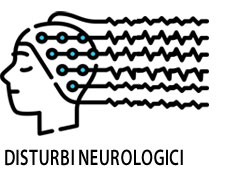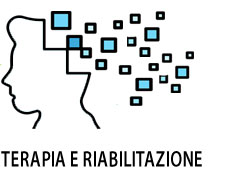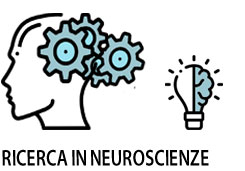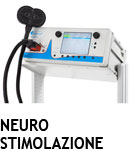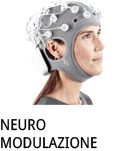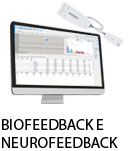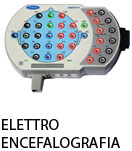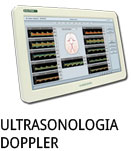- +39 011 5821948
- info@geasoluzioni.it
- Lun - Ven 8:00 - 17:00
Brain Oscillatory and Hemodynamic Activity in a Bimanual Coordination Task Following Transcranial Alternating Current Stimulation (tACS): A Combined EEG-fNIRS Study
- Abstract:
- Motor control is associated with synchronized oscillatory activity at alpha (8–12 Hz) and beta (12–30 Hz) frequencies in a cerebello-thalamo-cortical network. Previous studies demonstrated that transcranial alternating current stimulation (tACS) is capable of entraining ongoing oscillatory activity while also modulating motor control. However, the modulatory effects of tACS on both motor control and its underlying electro- and neurophysiological mechanisms remain ambiguous. Thus, the purpose of this study was to contribute to gathering neurophysiological knowledge regarding tACS effects by investigating the after-effects of 10 Hz tACS and 20 Hz tACS at parietal brain areas on bimanual coordination and its concurrent oscillatory and hemodynamic activity. Twenty-four right-handed healthy volunteers (12 females) aged between 18 and 30 (M = 22.35 ± 3.62) participated in the study and performed a coordination task requiring bimanual movements. Concurrent to bimanual motor training, participants received either 10 Hz tACS, 20 Hz tACS or a sham stimulation over the parietal cortex (at P3/P4 electrode positions) for 20 min via small gel electrodes (3,14 cm2 Ag/AgCl, amperage = 1 mA). Before and three time-points after tACS (immediately, 30 min and 1 day), bimanual coordination performance was assessed. Oscillatory activities were measured by electroencephalography (EEG) and hemodynamic changes were examined using functional near-infrared spectroscopy (fNIRS). Improvements of bimanual coordination performance were not differently between groups, thus, no tACS-specific effect on bimanual coordination performance emerged. However, physiological measures during the task revealed significant increases in parietal alpha activity immediately following 10 Hz tACS and 20 Hz tACS which were accompanied by significant decreases of Hboxy concentration in the right hemispheric motor cortex compared to the sham group. Based on the physiological responses, we conclude that tACS applied at parietal brain areas provoked electrophysiological and hemodynamic changes at brain regions of the motor network which are relevant for bimanual motor behavior. The existence of neurophysiological alterations immediately following tACS, especially in the absence of behavioral effects, are elementary for a profound understanding of the mechanisms underlying tACS. The lack of behavioral modifications strengthens the need for further research on tACS effects on neurophysiology and behavior using combined electrophysiological and neuroimaging methods.
- Patologie/Applicazioni:
- Anno:
- 2018
- Tipo di pubblicazione:
- Articolo
- Parola chiave:
- stimolazione elettrica transcranica; neuromodulazione; NIRS; Riabilitazione motoria; Sham
- Testata scientifica:
- Frontiers in Behavioral Neuroscience
- Nota:
- Scopo di questo studio è di contribuire alla raccolta di conoscenze neurofisiologiche riguardanti gli effetti della tACS, studiando i postumi della tACS a 10 Hz e del tACS a 20 Hz nelle aree del cervello parietale sulla coordinazione di entrambe le mani e sulla concomitante attività oscillatoria ed emodinamica. Ventiquattro volontari sani destrorsi (12 femmine) di età compresa tra i 18 ei 30 anni (M = 22,35 ± 3,62) hanno partecipato allo studio e hanno svolto un compito di coordinamento che richiedeva movimenti motori bimanuali. In concomitanza con questo allenamento i partecipanti hanno ricevuto stimolazioni tACS a 10 Hz, tACS a 20 Hz o stimolazione Sham fittizia sulla corteccia parietale (a posizioni di elettrodo P3 / P4) per 20 minuti tramite elettrodi a gel piccoli (3,14 cm2 Ag / AgCl, amperaggio = 1 mA). Le attività oscillatorie sono state misurate mediante elettroencefalografia (EEG) e le modifiche emodinamiche sono state esaminate utilizzando la spettroscopia funzionale nel vicino infrarosso (fNIRS). Si dimostra un miglioramento selettivo in (1) attività oscillatoria cerebrale nell'intervallo alfa e (2) diminuzioni nelle concentrazioni ΔHboxy (cambiamenti nella concentrazione di emoglobina ossigenata nei tessuti cerebrali) nelle regioni dell'area premotoria (BA6) , la corteccia motoria primaria (BA4) e la corteccia somatosensoriale primaria (BA3 / 2/1) dell'emisfero destro dopo il trattamento a 10 Hz di tACS e a 20 Hz di tACS rispetto alla stimolazione Sham fittizia.
- DOI:
- 10.3389/fnbeh.2018.00067
Hits: 2088
La nostra storia
GEA soluzioni si affaccia nel 2013 al mercato della strumentazione medicale di alto livello tecnologico ma la sua storia parte da più lontano, clicca qui per approfondire.
GEA SOLUZIONI SRL
via Spalato 72/A, Torino
Tel.: 011 5821948 / 011 4463853
Fax: 011 0433281
Email: info @ geasoluzioni.it
P. IVA IT11696920013
REA TO1233648

